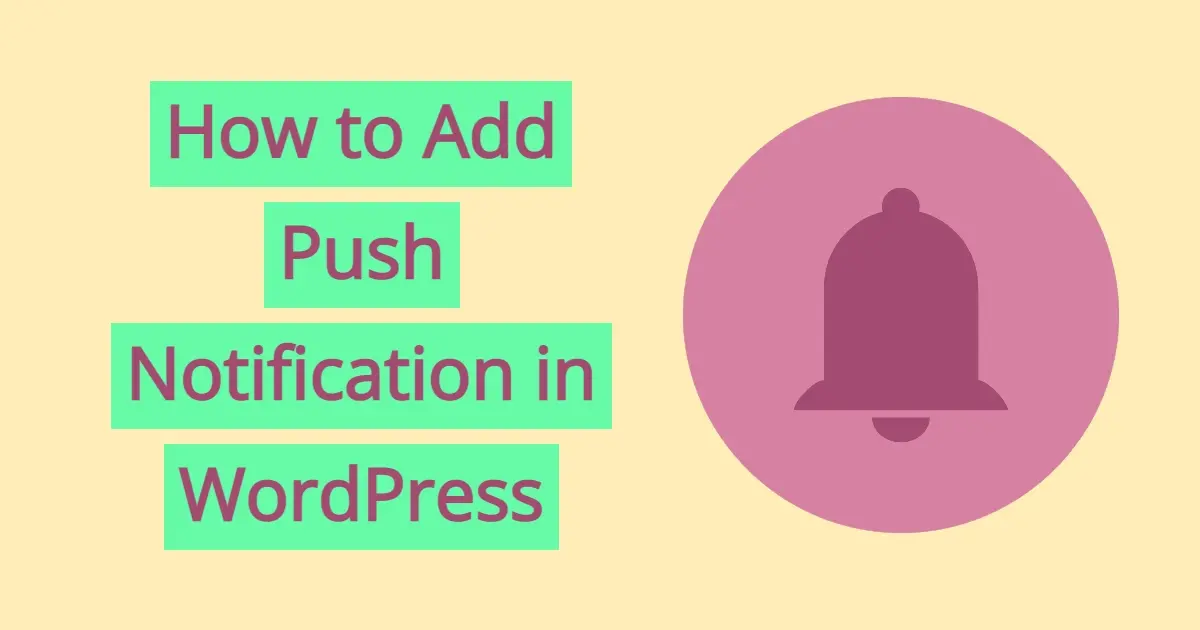Have you wanted a way to automate sending out simple messages to your users, even when they’re not on your site? You can do this with push notifications. This article is a basic guide to push notifications in WordPress.
What are push notifications?
Push notifications are a type of pop-up messaging geared to get the user’s attention to a mobile app. These messages can be updates, reminders, featured specials, and much more. A push notification is really simple, as it consists of the title, a short message, a link, an image, a logo, or even an emoji.
The end user, after allowing push notifications, can see them in the notification area of their mobile phone or their desktop. In order for the user to receive notifications, they have to consent to them, so that means they’re actually interested in what your website is selling.
What are some benefits to using push notifications in WordPress?
Some of the benefits of using push notifications in WordPress are:
- Allows visitors to come back to your website.
- Keeps visitors informed of upcoming news
- Keeps visitors informed of promotions.
Allows visitors to come back to your website
Push notifications are a handy tool in getting your visitors attention, and attracting them back to your website. As a side note, push notifications have proven to even perform better, at least 50% more than email newsletters. This is a great tool to have, because the average bounce rate for a website, or the times people come to your site and leave without going to any other page, can range between 26% to 70%.
Keeps visitors informed of upcoming news
You can use push notifications to make your visitors and customers aware of events, or new blog posts, or any other news.
Keeps visitors informed of promotions
When you have a promotion, you can use push notifications to get people to come back and purchase from you. Depending on what it is you could see an upwards of 3500% return on investment.
6 Steps to Add Push Notification in WordPress
In order to be able to harness the power of push notification in WordPress, you will need a 3rd party service. WordPress alone doesn’t have that technology and regular plugins don’t have that programming for push notifications. For this guide, you’ll use PushEngage.
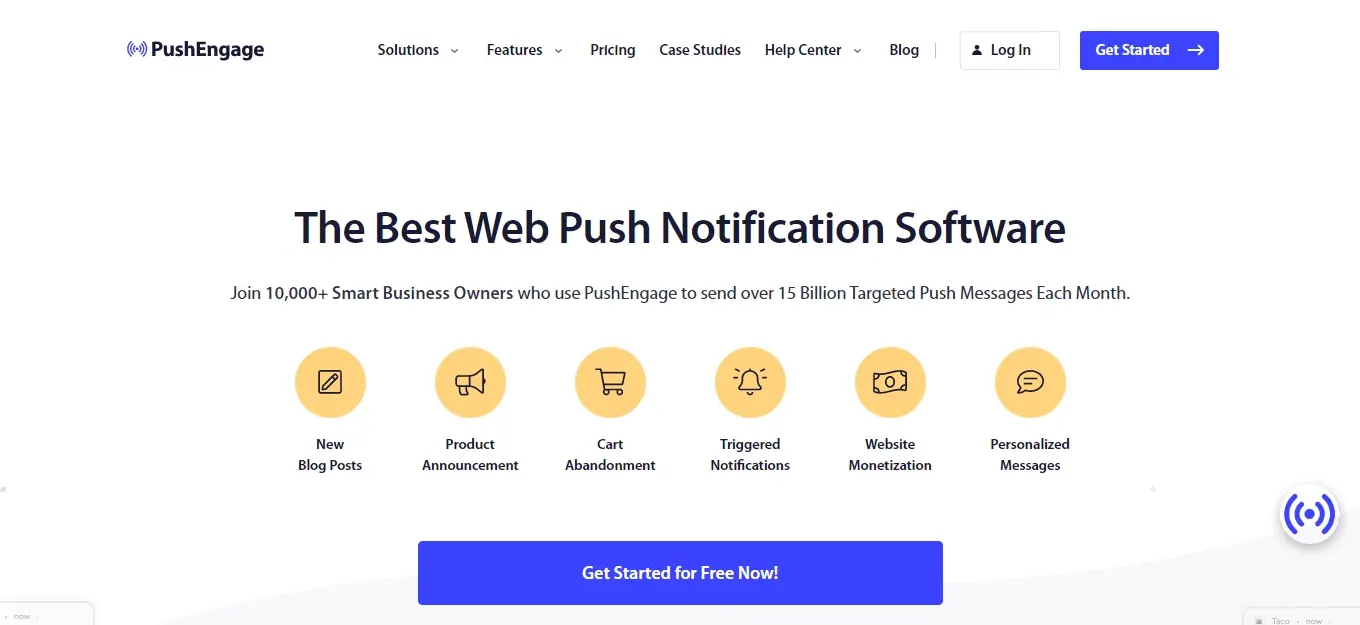
PushEngage is initially free to sign up to, but the features in their free package only support the following:
- Up to 30 push notification campaigns
- Up to 200 subscribers permitted
- Limited standard notifications only
- Targeted opt in trigger
- GDPR compliance
If you anticipate more than gaining 200 push notifications subscribers, you may want to upgrade to one of their larger packages, which starts as low as $9 per month.
Here’s the steps to implementing push notification in WordPress:
- Sign up for PushEngage.
- Enter your website’s details.
- Install the PushEngage plugin for WordPress.
- Generate an API key and copy it.
- Paste API key into the PushEngage plugin’s Setup area.
- Configure push notification message.
Sign up for PushEngage
To get signed up, you can click on their big blue button on the front page that says “Get Started for Free Now!”
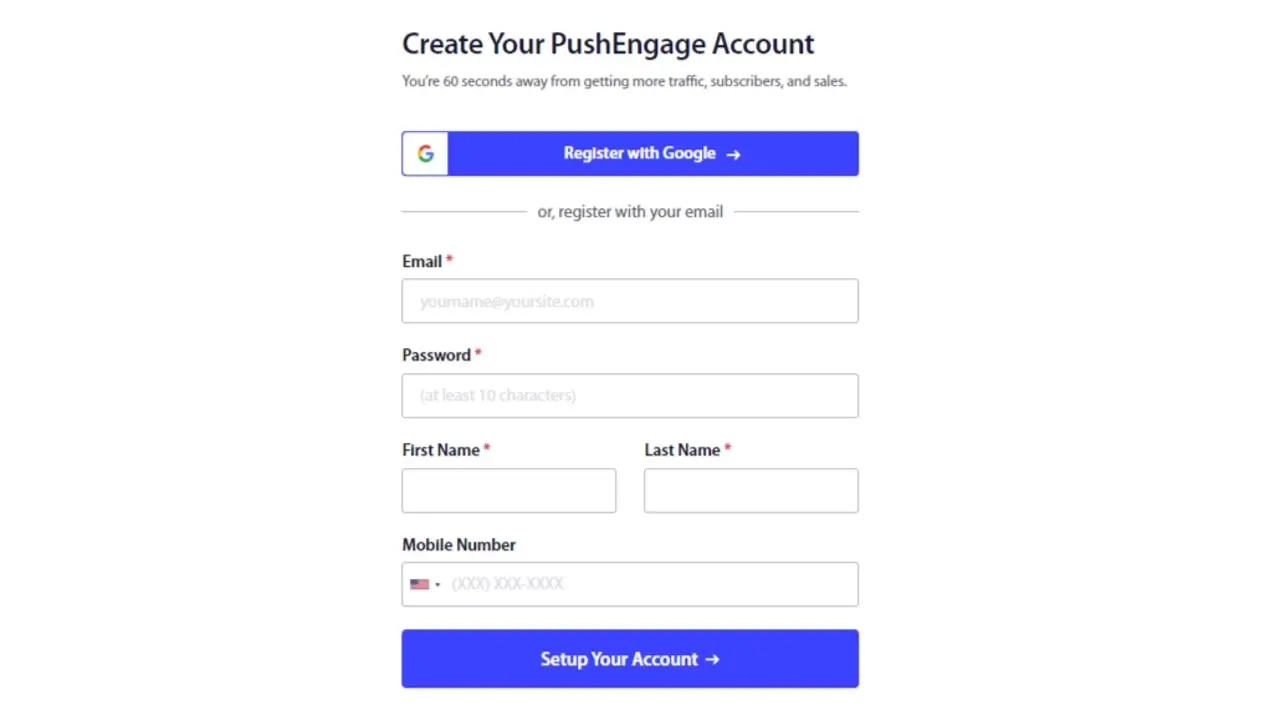
PushEngage makes it simple to sign up. If you have a Google Account, save yourself the typing time and use the Register with Google method. When you give PushEngage permission to sync up with your Google Account, you will be asked to clarify what email you prefer to use, as well as your phone number.
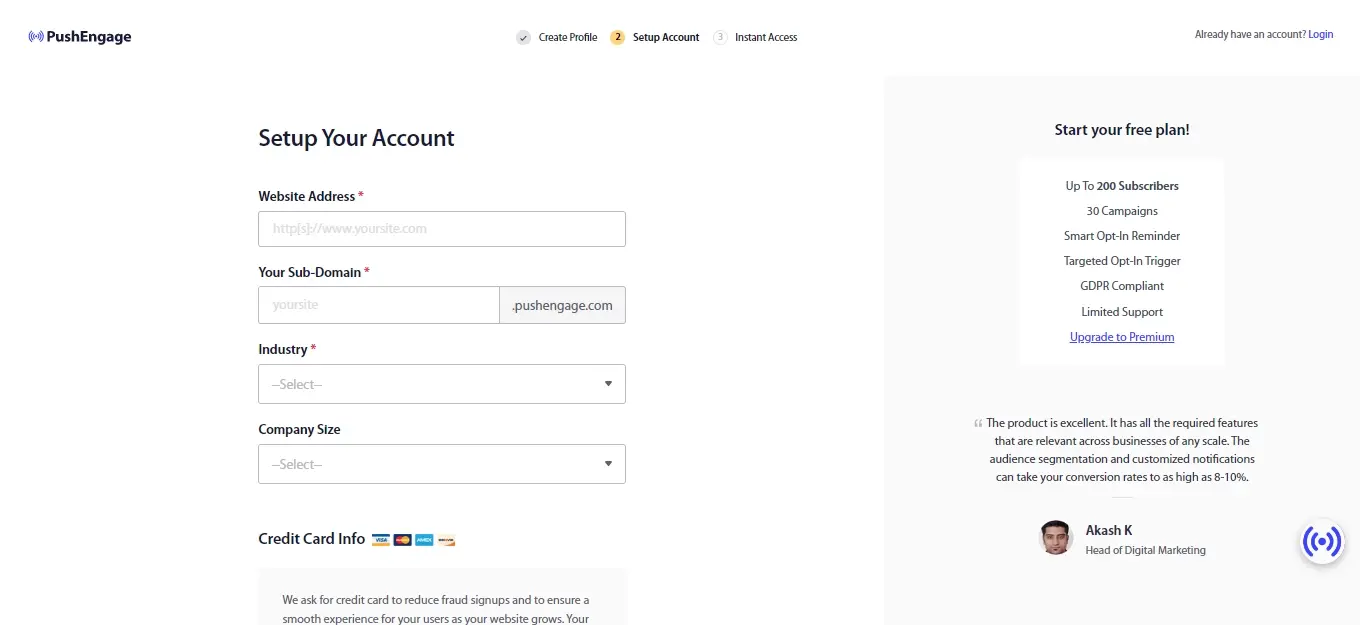
Enter your website’s details.
You will then be sent to a page that asks you to fill out your website, preferred handle with PushEngage that also serves as a subdomain with them, as well as a payment method in case you wish to upgrade later.
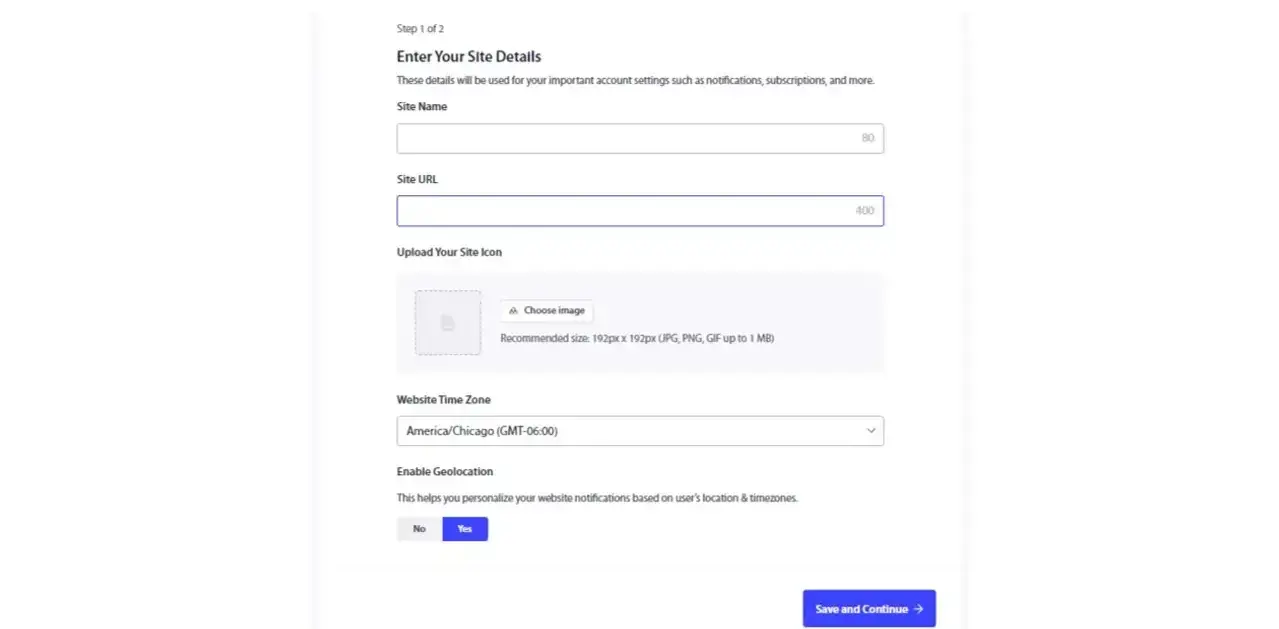
You will be asked to add an image that represents your website and a preferred time zone, which will help with tracking user behavior. Once you’ve done this onboarding step, you’ll be sent to a screen that allows you to select how you want to integrate the plugin.
Install the PushEngage plugin for WordPress.
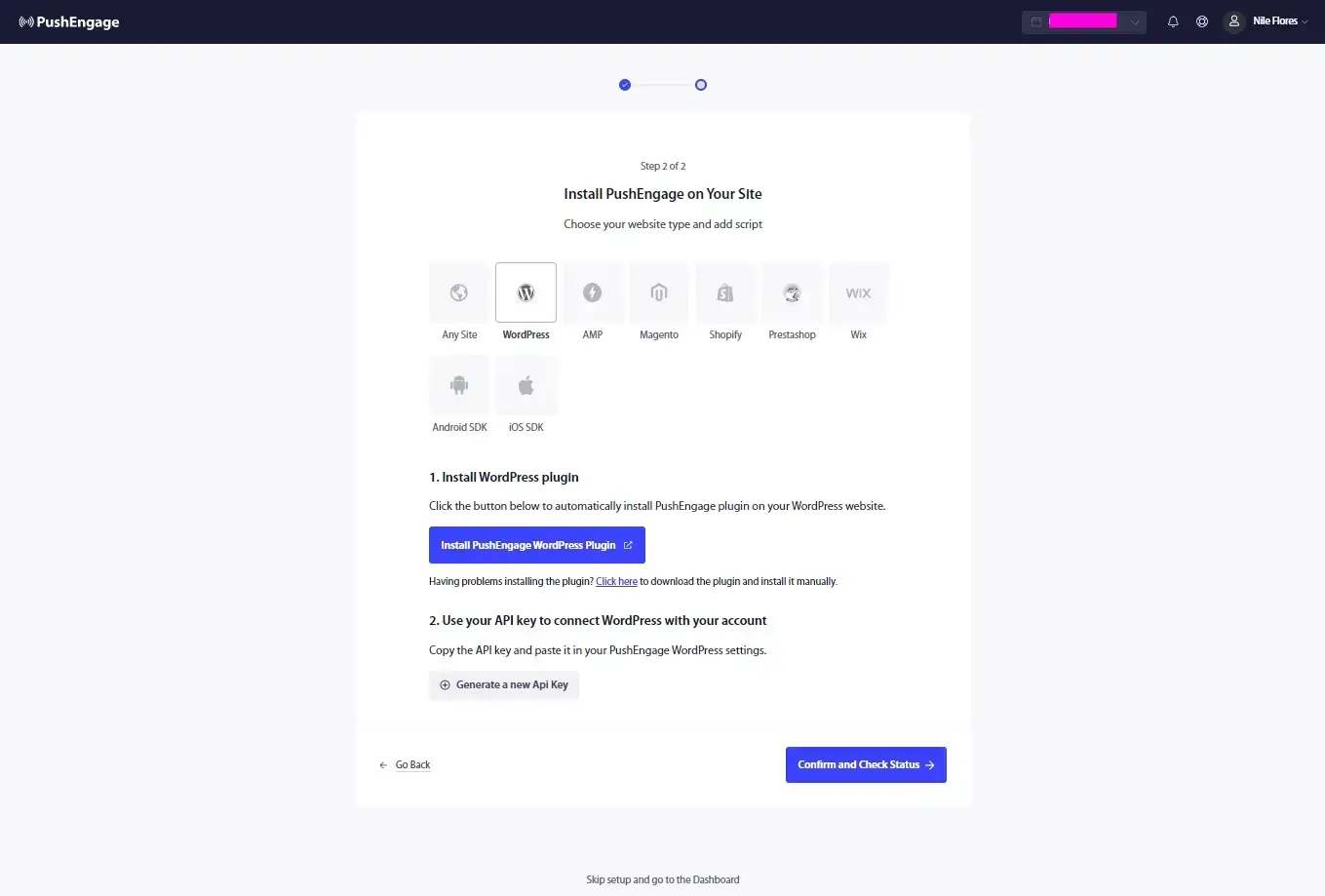
Since we’re implementing the push notification in WordPress, you’ll select WordPress, and then click on the blue button that says Install PushEngage WordPress plugin. If you’re logged into your WordPress admin area, the button will open your website in a new window, to the exact search result to install the PushEngage plugin.
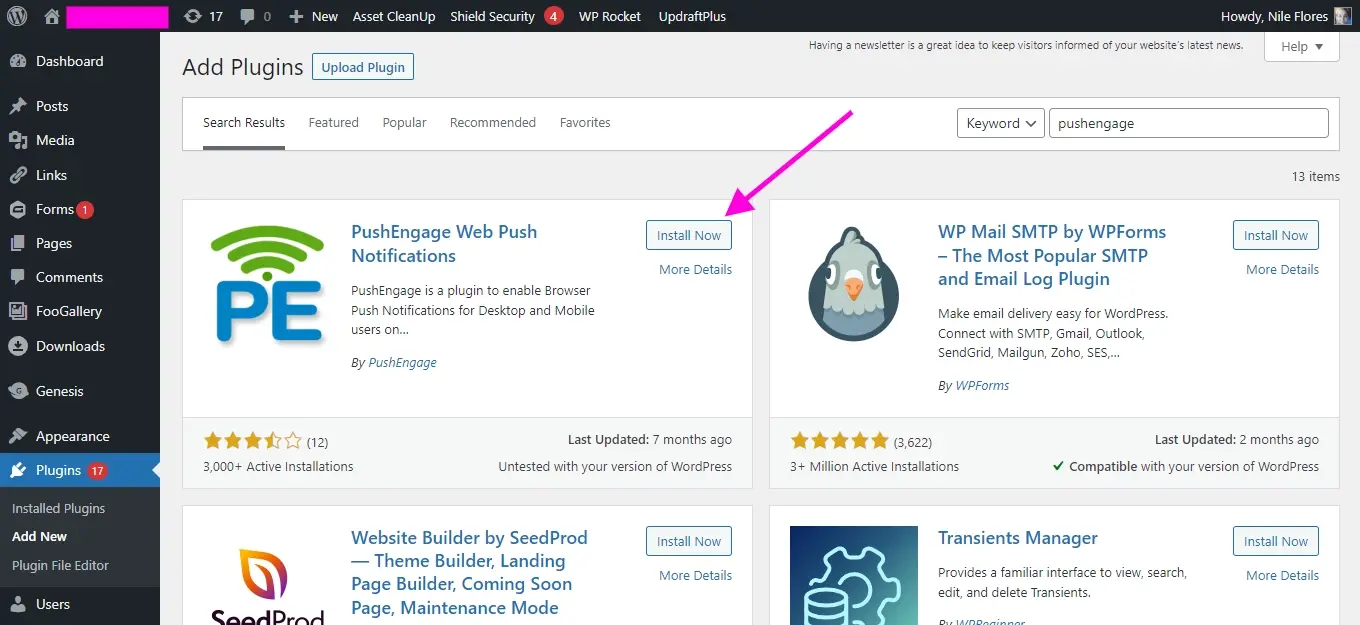
Generate an API key and copy it.
Once you’ve installed and activated the plugin, make sure to go to the window for the screen for PushEngage’s step 2. You will need to generate an API key.
Paste API key into the PushEngage plugin’s Setup area.
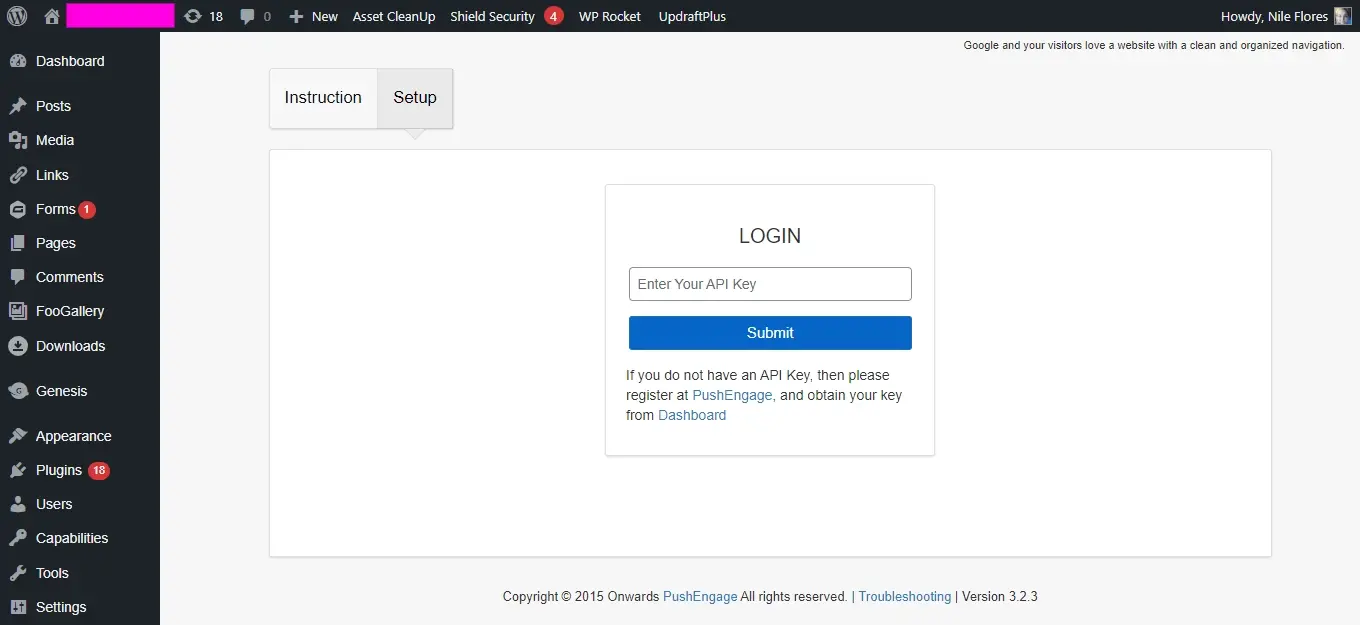
Copy the generated API key and go to PushEngage in your WordPress admin menu, and then to the Setup tab. Paste your key in the field, and click the blue submit button.
Configure push notification message.
Once you’ve submitted your API key, it’s time to configure the push notification you wish to send.
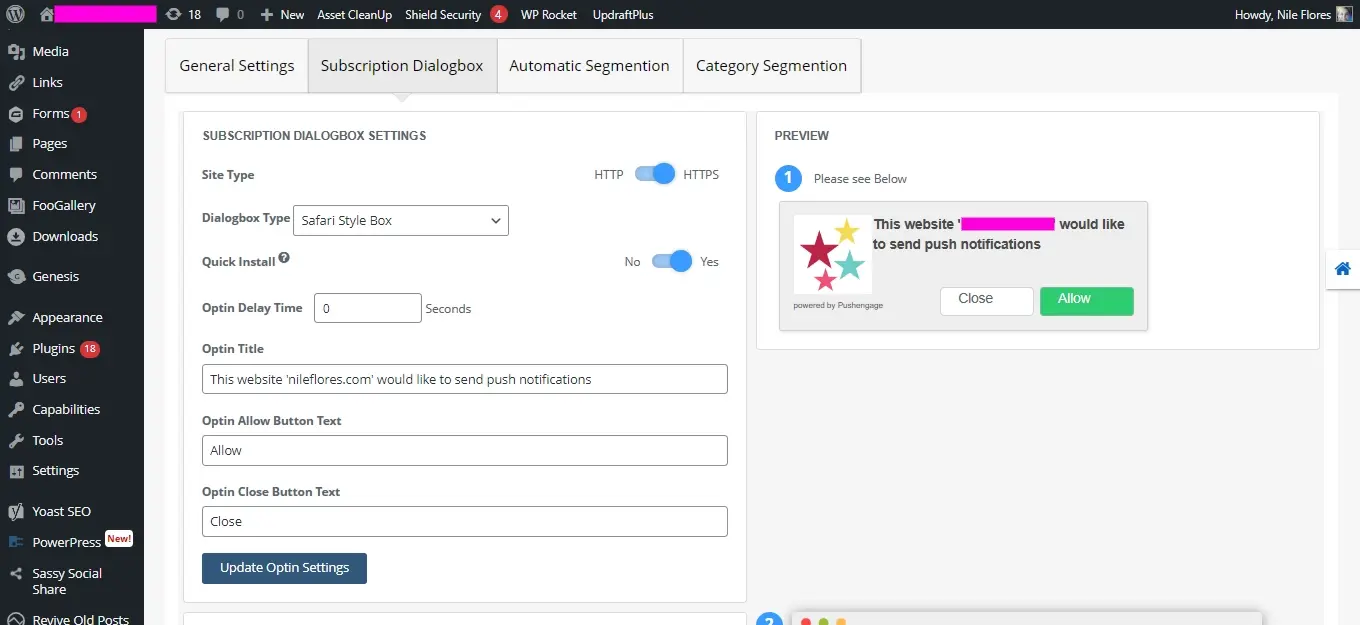
To customize the message you wish to show in your push notification, you’ll click to the Subscription Dialog Box. When you add your own changes, you can preview the end result of the push notification. Make sure to save the changes by clicking on the button that says “Update Option Settings”.
You can also set up automatic segmentation and set a thank you notice or whatever you like. Make sure once you’ve configured the settings of the plugin, to test and see if the push notification is viewing correctly on the frontend of your site. It’s best to either do this in Incognito Mode of your browser, or log out of your website.
When you test the push notification, make sure your desktop and laptop notifications work after clicking to consent for push notifications.
In Summary
Are push notifications in WordPress something that might fit your website’s needs? Try it out and see if your traffic increases, or if you make more money with your WordPress website. Hopefully this guide on how to add push notification in WordPress has been helpful, so please don’t forget to share this article.
Push notifications are an important part of any website, but having a reliable hosting plan for WordPress is just as important. That's why we invite you to check out our hosting plans for WordPress and managed hosting servers for WordPress and see how we can help you get the most out of your WordPress website.
Frequently Asked Questions
Is WordPress free?
All you need to do to use WordPress is to invest in a web hosting plan since the software itself is free.
Are WordPress plugins free?
WordPress has loads of plugins you can install, some of them are free, but some of them you will need to pay for. You can learn how to use WordPress Plugins on our blog.
What is migrate in WordPress?
WordPress migration, simply put, is the process of moving a WordPress site from one server to another.
Are WordPress-free themes safe?
People often think that free themes have low quality. However, free WordPress themes actually have high quality and are free to use.

Nile Flores is a long time professional blogger, as well as WordPress website designer and developer from the St. Louis Metro East. Nile blogs at NileFlores.com, where she’s passionate about helping website owners, whether they’re small business owners or bloggers. She teaches about Blogging, Social Media, Search Engine Optimization, Website Design, and WordPress. Additionally, Nile loves to speak at WordCamps (WordPress conferences) across the United States. When Nile isn’t knee-deep in coding, she’s a proud mom of a college student, and enjoys oil painting, cigar smoking, nail art design, and practicing traditional Okinawan kempo karate.
View all posts by Nile Flores















